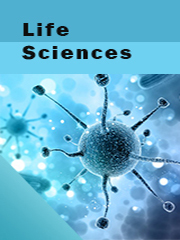TOP CATEGORY: Chemicals & Materials | Life Sciences | Banking & Finance | ICT Media

Download Report PDF Instantly
Report overview
The global Anticancer Drugs market was valued at US$ 87460 million in 2022 and is projected to reach US$ 111580 million by 2030, at a CAGR of 3.5% during the forecast period. The influence of COVID-19 and the Russia-Ukraine War were considered while estimating market sizes.
Antineoplastic drugs, also known as anticancer drugs, anti-malignant drugs, refer to drugs for the treatment of malignant tumors.
This report aims to provide a comprehensive presentation of the global market for Anticancer Drugs, with both quantitative and qualitative analysis, to help readers develop business/growth strategies, assess the market competitive situation, analyze their position in the current marketplace, and make informed business decisions regarding Anticancer Drugs. This report contains market size and forecasts of Anticancer Drugs in global, including the following market information:
Global Anticancer Drugs Market Revenue, 2018-2023, 2024-2030, ($ millions)
Global Anticancer Drugs Market Sales, 2018-2023, 2024-2030, (MT)
Global top five Anticancer Drugs companies in 2022 (%)
Simply put, there are chemotherapy drugs and biological agents. In recent years, the development of molecular oncology and molecular pharmacology has gradually clarified the nature of tumors; the invention and application of advanced technologies such as large-scale rapid screening, combinatorial chemistry, and genetic engineering have accelerated the process of drug development; research and development of anti-tumor drugs have been Enter a new era.
We surveyed the Anticancer Drugs manufacturers, suppliers, distributors and industry experts on this industry, involving the sales, revenue, demand, price change, product type, recent development and plan, industry trends, drivers, challenges, obstacles, and potential risks.
Total Market by Segment:
Chapter 1: Introduces the definition of Anticancer Drugs, market overview.
Chapter 2: Global Anticancer Drugs market size in revenue and volume.
Chapter 3: Detailed analysis of Anticancer Drugs manufacturers competitive landscape, price, sales and revenue market share, latest development plan, merger, and acquisition information, etc.
Chapter 4: Provides the analysis of various market segments by type, covering the market size and development potential of each market segment, to help readers find the blue ocean market in different market segments.
Chapter 5: Provides the analysis of various market segments by application, covering the market size and development potential of each market segment, to help readers find the blue ocean market in different downstream markets.
Chapter 6: Sales of Anticancer Drugs in regional level and country level. It provides a quantitative analysis of the market size and development potential of each region and its main countries and introduces the market development, future development prospects, market space of each country in the world.
Chapter 7: Provides profiles of key players, introducing the basic situation of the main companies in the market in detail, including product sales, revenue, price, gross margin, product introduction, recent development, etc.
Chapter 8: Global Anticancer Drugs capacity by region & country.
Chapter 9: Introduces the market dynamics, latest developments of the market, the driving factors and restrictive factors of the market, the challenges and risks faced by manufacturers in the industry, and the analysis of relevant policies in the industry.
Chapter 10: Analysis of industrial chain, including the upstream and downstream of the industry.
Chapter 11: The main points and conclusions of the report.